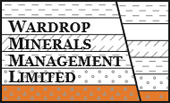Field Geology Rough Geotechnics
Many years ago the author was faced with the challenge of drilling a 30 metre thick sand and gravel deposit in Scotland that was covered by thick, wet, soft peat with areas of standing water. The peat was known from manual probing to vary from around 2.5 to over 6 metres in thickness. It was too solid to float over on a boat but too wet to support wheeled or tracked vehicles. Time was short.
The idea of using 'navvy mats' or excavator mats was considered so it became necessary to know what the ground bearing capacity of the peat was in relation to the weight of the drilling rig and the size of navvy mats available.
The author had noticed that generally it was perfectly sound to walk over the peat and stand still on both feet. Often though if you stood on one foot then you started to sink. So the author's boot was placed on metric squared paper and an outline was traced to derive the surface area of the boot sole. Together with the mass of the author it was thus possible to calculate two limiting values for ground bearing capacity - one foot sinking and 2 feet sufficiently supported.
In the event wooden mats of sufficient size could be sourced and were adequate (just) to support a duo-pipe reverse circulation drilling rig which was able to successfully complete the site investigation.
For technical completeness the limiting bearing capacities were derived:
One foot sinking 30.66 Kn/sqM. Two feet sufficiently supported 15.33 KN/sqM.
Navvy mats 2.0 x 5.0 metres = 10 sqM.
Drilling rig 11 Tonnes plus pull out downforce 5.5 Tonnes = 16.5 Tonnes = 161.86 KiloNewtons.
Maximum rig pressure on mats 16.19 KN/sqM.
















